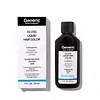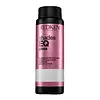Generic Value Products Gloss Liquid Hair Color Compare To Redken Shades EQ Gloss Versus REDKEN Shades EQ Hair Gloss
What's inside
What's inside
 Key Ingredients
Key Ingredients

 Benefits
Benefits

 Concerns
Concerns

 Ingredients Side-by-side
Ingredients Side-by-side

Water
Skin ConditioningIsopropyl Alcohol
SolventSodium C14-16 Olefin Sulfonate
CleansingUndeceth-3
EmollientPropylene Glycol
HumectantCocamide Mipa
EmulsifyingOleyl Alcohol
EmollientLauryl Alcohol
EmollientParfum
MaskingSodium Sulfite
PreservativeMyristyl Alcohol
EmollientErythorbic Acid
AntioxidantEthanolamine
BufferingM-Aminophenol
P-Aminophenol
PEG-12 Dimethicone
Skin ConditioningP-Phenylenediamine
Resorcinol
AntioxidantEDTA
Basic Yellow 87
Sodium Benzoate
Masking2-Amino-3-Hydroxypyridine
2-Amino-6-Chloro-4-Nitrophenol
Wheat Amino Acids
Skin ConditioningPhenoxyethanol
PreservativePotassium Sorbate
PreservativeHexyl Cinnamal
PerfumingLinalool
PerfumingWater, Isopropyl Alcohol, Sodium C14-16 Olefin Sulfonate, Undeceth-3, Propylene Glycol, Cocamide Mipa, Oleyl Alcohol, Lauryl Alcohol, Parfum, Sodium Sulfite, Myristyl Alcohol, Erythorbic Acid, Ethanolamine, M-Aminophenol, P-Aminophenol, PEG-12 Dimethicone, P-Phenylenediamine, Resorcinol, EDTA, Basic Yellow 87, Sodium Benzoate, 2-Amino-3-Hydroxypyridine, 2-Amino-6-Chloro-4-Nitrophenol, Wheat Amino Acids, Phenoxyethanol, Potassium Sorbate, Hexyl Cinnamal, Linalool
Water
Skin ConditioningIsopropyl Alcohol
SolventSodium C14-16 Olefin Sulfonate
CleansingDeceth-3
EmulsifyingPropylene Glycol
HumectantCocamide Mipa
EmulsifyingOleyl Alcohol
EmollientPPG-2 Butyl Ether
Skin ConditioningLauryl Alcohol
EmollientPEG/PPG-4/12 Dimethicone
EmulsifyingSodium Sulfite
PreservativePPG-5-Ceteth-10 Phosphate
EmulsifyingCoco-Betaine
CleansingMyristyl Alcohol
EmollientParfum
MaskingSodium Chloride
MaskingEthanolamine
Buffering2-Amino-6-Chloro-4-Nitrophenol
Erythorbic Acid
AntioxidantCetyl Alcohol
EmollientM-Aminophenol
2-Nitro-5-Glyceryl Methylaniline
Sodium Citrate
BufferingP-Phenylenediamine
Wheat Amino Acids
Skin ConditioningBenzoic Acid
MaskingEDTA
P-Aminophenol
Hc Red No. 3
Tetrasodium EDTA
Phenoxyethanol
PreservativeDisodium EDTA
Potassium Sorbate
PreservativePentaerythrityl Tetra-Di-T-Butyl Hydroxyhydrocinnamate
AntioxidantSodium Metabisulfite
AntioxidantWater, Isopropyl Alcohol, Sodium C14-16 Olefin Sulfonate, Deceth-3, Propylene Glycol, Cocamide Mipa, Oleyl Alcohol, PPG-2 Butyl Ether, Lauryl Alcohol, PEG/PPG-4/12 Dimethicone, Sodium Sulfite, PPG-5-Ceteth-10 Phosphate, Coco-Betaine, Myristyl Alcohol, Parfum, Sodium Chloride, Ethanolamine, 2-Amino-6-Chloro-4-Nitrophenol, Erythorbic Acid, Cetyl Alcohol, M-Aminophenol, 2-Nitro-5-Glyceryl Methylaniline, Sodium Citrate, P-Phenylenediamine, Wheat Amino Acids, Benzoic Acid, EDTA, P-Aminophenol, Hc Red No. 3, Tetrasodium EDTA, Phenoxyethanol, Disodium EDTA, Potassium Sorbate, Pentaerythrityl Tetra-Di-T-Butyl Hydroxyhydrocinnamate, Sodium Metabisulfite
Ingredients Explained
These ingredients are found in both products.
Ingredients higher up in an ingredient list are typically present in a larger amount.
We don't have a description for 2-Amino-6-Chloro-4-Nitrophenol yet.
We don't have a description for Cocamide Mipa yet.
EDTA is the shortened name for ethylenediamine tetraacetic acid. It is a chelating agent and used to stabilize products.
Chelating Agents are used to prevent trace metal ions from binding to other ingredients. This can prevent unwanted reactions or changed efficacy of products.
Erythorbic Acid is an antioxidant.
We don't have a description for Ethanolamine yet.
Isopropyl Alcohol is more commonly known as rubbing alcohol. It is most commonly used as a solvent, meaning it helps other ingredients dissolve.
This ingredient is an astringent alcohol. Astringent alcohols may also irritate skin as they high amounts may strip away your skin's natural oils.
Other types of astringent alcohols include:
According to the National Rosacea Society based in the US, you should be mindful of products with these alcohols in the top half of ingredients.
Any type of sanitizing product will have high amounts of alcohol to help kill bacteria and viruses.
Learn more about Isopropyl AlcoholLauryl Alcohol is a type of fatty alcohol. It is derived from palm kernel oil or coconut oil.
Fatty Alcohols are most often used as an emollient or to thicken a product. They are usually derived from natural fats and oils and therefore do not have the same drying or irritating effect as solvent alcohols.
We don't have a description for M-Aminophenol yet.
Myristyl Alcohol is type of fatty alcohol. It is a white, waxy solid and insoluble in water.
As an emollient, it hydrates the skin by trapping moisture in.
Fatty Alcohols are most often used as an emollient or to thicken a product. They are usually derived from natural fats and oils and therefore do not have the same drying or irritating effect as solvent alcohols.
Learn more about Myristyl AlcoholOleyl Alcohol is a type of fatty alcohol made from oleic acid.
Fatty Alcohols are most often used as an emollient or to thicken a product. They are usually derived from natural fats and oils and therefore do not have the same drying or irritating effect as solvent alcohols.
We don't have a description for P-Aminophenol yet.
This ingredient is also called para-phenylenediamine or PPD. It is commonly found in hair dyes and as a substitute for henna.
PPD uses its salt components to impart a color to hair; the exact color depends on the formulation of the other ingredients.
The CDC lists PPD as a contact allergen that can cause dermatitis, or skin irritation. In 2006, this ingredient was voted Allergen of the Year by the American Contact Dermatitis Society.
The CIR (Cosmetic Ingredient Review) states this ingredient is safe to use for those who do not experience sensitization.
A review of 31 studies published between 1992 and 2005 looked at whether personal hair dye use is linked to cancer.
While one well-designed study found possible associations with certain cancers like non-Hodgkin’s lymphoma and bladder cancer, these results were not consistently seen in other studies.
Because the way each study measured hair dye use varied, a formal meta-analysis couldn’t be done.
Learn more about P-PhenylenediamineParfum is a catch-all term for an ingredient or more that is used to give a scent to products.
Also called "fragrance", this ingredient can be a blend of hundreds of chemicals or plant oils. This means every product with "fragrance" or "parfum" in the ingredients list is a different mixture.
For instance, Habanolide is a proprietary trade name for a specific aroma chemical. When used as a fragrance ingredient in cosmetics, most aroma chemicals fall under the broad labeling category of “FRAGRANCE” or “PARFUM” according to EU and US regulations.
The term 'parfum' or 'fragrance' is not regulated in many countries. In many cases, it is up to the brand to define this term.
For instance, many brands choose to label themselves as "fragrance-free" because they are not using synthetic fragrances. However, their products may still contain ingredients such as essential oils that are considered a fragrance by INCI standards.
One example is Calendula flower extract. Calendula is an essential oil that still imparts a scent or 'fragrance'.
Depending on the blend, the ingredients in the mixture can cause allergies and sensitivities on the skin. Some ingredients that are known EU allergens include linalool and citronellol.
Parfum can also be used to mask or cover an unpleasant scent.
The bottom line is: not all fragrances/parfum/ingredients are created equally. If you are worried about fragrances, we recommend taking a closer look at an ingredient. And of course, we always recommend speaking with a professional.
Learn more about ParfumPhenoxyethanol is a preservative that has germicide, antimicrobial, and aromatic properties. Studies show that phenoxyethanol can prevent microbial growth. By itself, it has a scent that is similar to that of a rose.
It's often used in formulations along with Caprylyl Glycol to preserve the shelf life of products.
Potassium Sorbate is a preservative used to prevent yeast and mold in products. It is commonly found in both cosmetic and food products.
This ingredient comes from potassium salt derived from sorbic acid. Sorbic acid is a natural antibiotic and effective against fungus.
Both potassium sorbate and sorbic acid can be found in baked goods, cheeses, dried meats, dried fruit, ice cream, pickles, wine, yogurt, and more.
You'll often find this ingredient used with other preservatives.
Learn more about Potassium SorbatePropylene Glycol is an odorless, colorless liquid. As a humectant, it helps skin retain moisture. It also aids in delivering active ingredients.
Another role of this ingredient is preventing a product from melting or freezing. Propylene glycol also adds antimicrobrial properties to a product, elongating product lifespan.
This ingredient is considered an organic alcohol and commonly added into both cosmetics and foods.
Those with sensitive skin or conditions may develop a rash when using this ingredient.
Learn more about Propylene GlycolSodium C14-16 Olefin Sulfonate is a cleansing agent made from a mixture of long chain sulfonate salts. It can also help produce foam.
This ingredient may be drying. We recommend speaking with a professional if you have concerns.
Sodium Sulfite is a preservative. Preservatives help prevent mold and bacteria from growing in cosmetics.
This ingredient has been shown to break the bonds in hair, acting as a natural straightener.
It is commonly used in food. It should be noted sodium sulfite degrades both vitamins B1 and E.
Fun fact: Sulfites are naturally occuring in wine.
Learn more about Sodium SulfiteWater. It's the most common cosmetic ingredient of all. You'll usually see it at the top of ingredient lists, meaning that it makes up the largest part of the product.
So why is it so popular? Water most often acts as a solvent - this means that it helps dissolve other ingredients into the formulation.
You'll also recognize water as that liquid we all need to stay alive. If you see this, drink a glass of water. Stay hydrated!
Learn more about WaterWe don't have a description for Wheat Amino Acids yet.